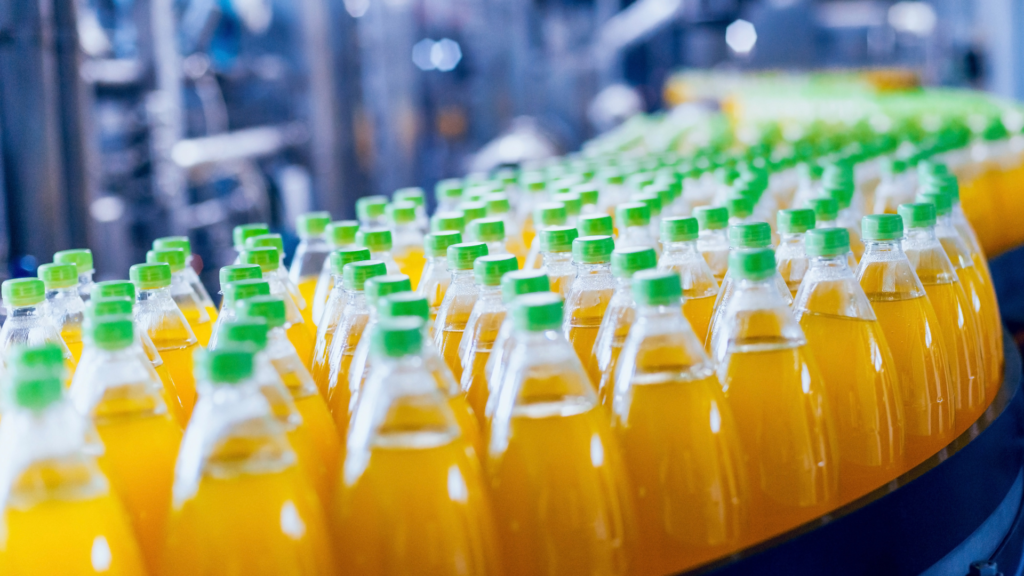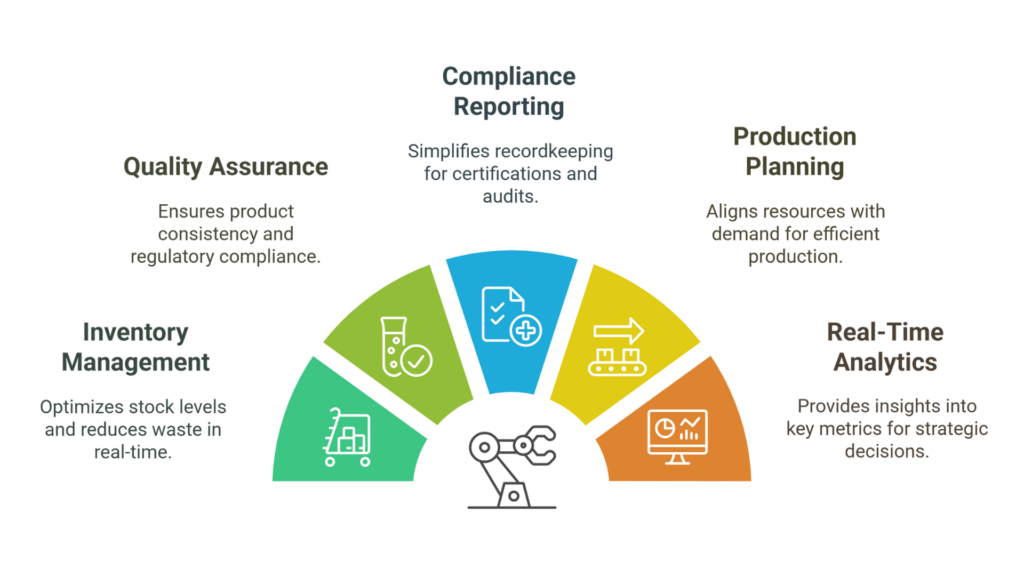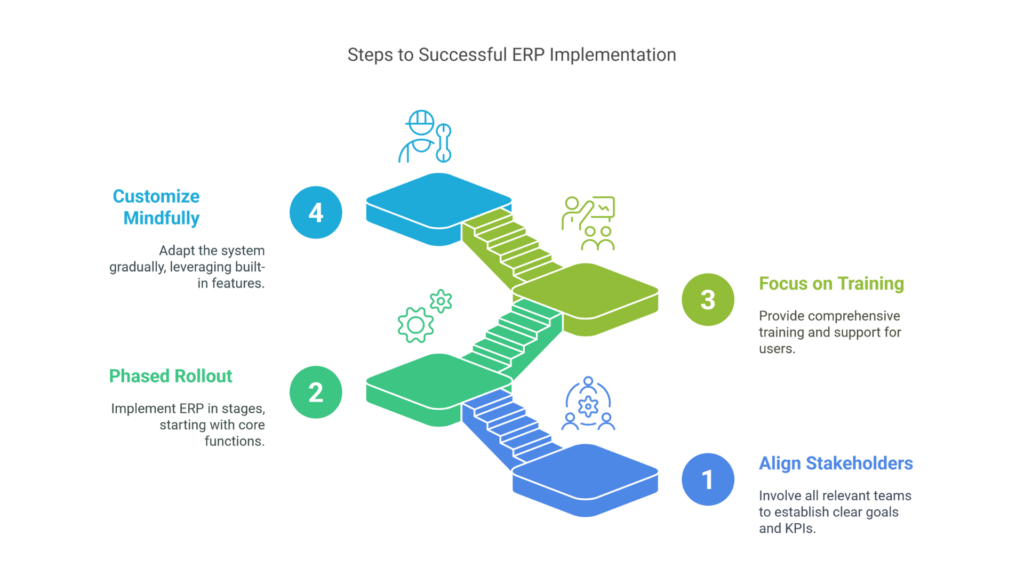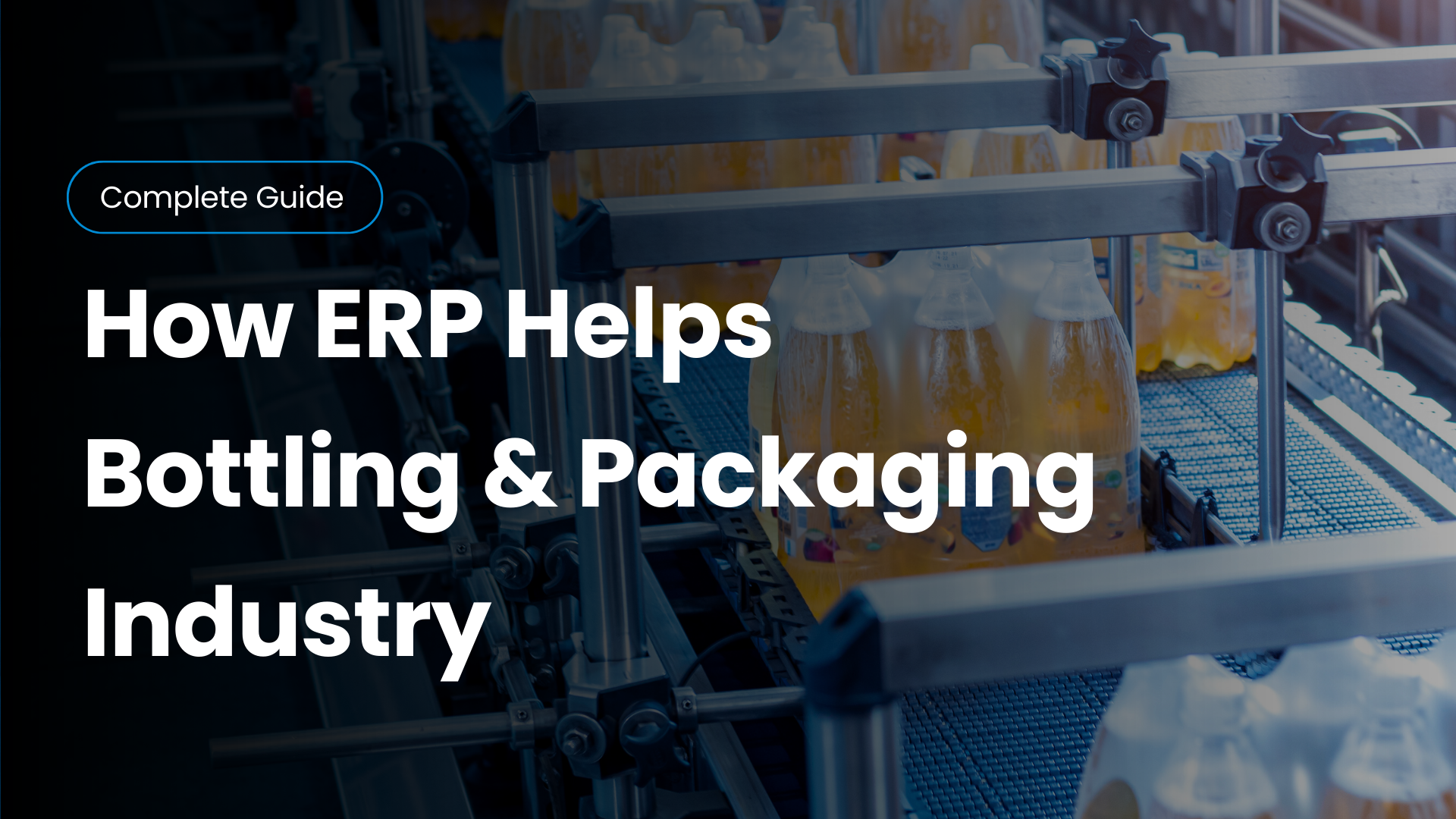Shelf-stable food and beverage production comes with tough challenges—strict regulations, varying shelf lives, and high-volume output. To stay competitive, you need more than just manual processes. You need smart, specialized tools.
Manage your data of products and need to unite all operations, you feel difficulty in this process. Don’t worry, ERP (Enterprise resource planning) is the all-in-one solutions that help you manage everything from ingredient sourcing to packaging and distribution, while ensuring FDA compliance at every step.
With ERP, you can simplify bottling, canning, and packaging operations, improve product quality, and stay flexible as consumer demands shift. Ready to take control of your operations? Let’s explore how ERP can reshape your shelf-stable bottling and packaging operations—and your bottom line.

Current Challenges in Shelf-Stable Production
Producing shelf-stable products isn’t just about getting it done—it’s about getting it right. Precision, consistency, and compliance are critical, but these common challenges often stand in the way:
Inventory Inaccuracies
Mismanaged stock leads to delays, overproduction, or costly shortages. Tracking the goods and products is the main challenge; without a proper process of tracking, your entire supply chain feels the strain.
Complex Production Scheduling
Different fill levels, packaging needs, and processing times make scheduling a real headache. Lack of real-time insights often leads to avoidable delays and operational slowdowns.
Quality Control Gap
Consistency across batches is critical in shelf-stable products. Any variation in heat processing, fill level, or container seal can compromise safety. Yet, tracking quality metrics manually leaves too much room for error.
Regulatory Compliance
Meeting FDA, USDA, or international food safety standards involves detailed recordkeeping, audits, and batch traceability. Manual systems often fall short when companies are faced with sudden inspections or recalls.
What Is ERP Software?
ERPsoftware integrates key business functions into a unified system, covering finance, inventory, procurement, manufacturing, and logistics.
By bringing everything into one digital ecosystem, ERP helps shelf-stable market product manufacturers eliminate data silos and gain a bird’s-eye view of process and operations. This real-time connectivity improves decision-making, enhances workflow efficiency, and supports scalability as the business grows.
Cloud-based ERP systems for food and beverages are becoming increasingly popular due to their flexibility, easier updates, and remote accessibility. On-premise solutions, however, still appeal to businesses with highly customized workflows or specific data control requirements.
Key ERP Features for Bottling, Canning & Packaging
Modern ERP automate the industry processes and offers tailored modules to meet the unique needs of shelf-stable product manufacturers:

1. Inventory & Warehouse Management
Real-time stock management reduces waste label, optimizes space, and ensures critical components like lids, cans, bottles, and labels are always available.
2. Quality Assurance & Traceability
ERP enables automated quality checks at every stage of the process, ensuring regulatory compliance and product consistency. Batch numbers and expiration dates are recorded and easily traced in case of recalls.
3. Compliance & Regulatory Reporting
With built-in compliance tools, ERP systems simplify recordkeeping for product certifications, process audits, and inspections, making documentation fast and painless.
4. Production Planning & Scheduling
ERP systems align resources with demand. Whether switching bottle sizes or coordinating co-packing runs, the system ensures minimal changeover time and maximized output.
5. Real-Time Analytics & Dashboards
Dashboards give managers visibility into key metrics like production output, waste, downtime, and order fulfillment—empowering better strategic decisions.
Transforming Bottling Operations with ERP
In bottling shelf-stable market products isn’t just about filling containers—it’s about precision, compliance, and adaptability. ERP software brings structure and visibility to bottling lines, especially when dealing with multiple product SKUs and label process.
With an integrated ERP system, bottling plants can:
- Automate fill-line changeovers based on product type, size, or regulatory requirements. This minimizes downtime and human error.
- Manage labeling consistency across different batches, ensuring accurate branding and compliance with allergen and nutritional labeling rules.
- Track lot numbers and expiration dates directly from the bottling line, linking them to downstream logistics and recall systems.
Incorporating ERP allows teams to better manage raw materials, reduce spoilage, and maintain production schedules with greater reliability.
Enhancing Canning Efficiency Through ERP
The canning process, particularly for shelf-stable products, must meet strict standards for product safety and process sterility. ERP system proves that this is the only solution to automating and optimizing these requirements.
With ERP in place, canning process benefit from:
- Recipe management tools that maintain consistent formulation across batches while allowing real-time adjustments for yield or ingredient substitutions.
- Preventive maintenance scheduling for can seamers, sterilizers, and pressure vessels—reducing unexpected downtime.
- Monitoring of critical control points (CCPs) like internal temperature and vacuum levels, ensuring compliance with food safety standards.
ERP also improves coordination across departments—aligning procurement, production, and distribution to eliminate inefficiencies and deliver on time.
Optimizing Packaging Workflows
Packaging is the final touchpoint before products hit shelves, and it’s one of the most cost-sensitive areas in the production line. ERP software brings intelligence to the packaging process by integrating systems that manage product materials, machines, and labor in sync.
Retail ERP Solution enable seamless integration between packaging and retail sales, making it easier to manage inventory, automate order fulfillment, and ensure products are correctly labeled for the retail market. Whether you’re running large retail batches or smaller private labels, ERP systems ensure smooth operations from production to point of sale.
Key benefits of ERP in packaging include:
- Integration with packaging equipment, enabling automation from case forming to palletizing.
- Tracking of packaging material consumption and waste, helping companies meet sustainability targets and reduce costs.
- Real-time coordination with inventory and shipping modules, ensuring products are correctly labeled, boxed, and routed for delivery.
ERP software enables flexible packaging configurations without compromising accuracy or speed, supporting both large retail runs and small-batch private labels.
Real-World Success Stories
Case Study: Boosting Bottling Efficiency
A mid-sized food and beverage manufacturer implemented an ERP solution to manage its growing line process of shelf-stable drinks. Before ERP, the team struggled with inconsistent production runs and frequent changeover delays. After integrating ERP:
- Changeover times dropped by 40%
- Inventory accuracy improved by 95%
- Real-time dashboards gave managers instant visibility into bottlenecks
The ERP system helped the company meet seasonal demand without missing a beat.
Case Study: Traceability in Canning
A canned food producer needed to comply with international traceability standards. By adopting an ERP with batch tracking and QA tools:
- They achieved 100% product traceability.
- Passed three consecutive audits with zero major findings
- Reduced recall risk by centralizing quality documentation
ERP became the backbone of their food safety and customer trust strategy.
Best Practices for ERP Implementation
Applying these best practices for ERP implementation in a shelf-stable market product manufacturing environment requires more than just a software purchase. Here are some proven steps:

1. Align Stakeholders Early
Involve processes, quality, IT, and executive teams from the start. Clear goals and defined KPIs lead to better adoption.
2. Consider a Phased Rollout
Rather than switching everything at once, roll out ERP in phases. Start with inventory or production planning, then move to QA and compliance.
3. Focus on Training and Support
Even the best ERP systems fall flat without proper training. Choose the right vendor with a strong support system, and invest in ongoing education.
4. Customize Mindfully
Avoid over-customizing out of the gate. Lean on built-in features and evolve the system as your team becomes more familiar with it.
If you want to need more about best practise of ERP Implementation
Measuring ROI & Key Performance Indicators
Once the system is live, measuring performance is key to long-term success. Here are some of the most important KPIs that will help you:
- Throughput rate: How many units are completed per hour
- Yield percentage: Ratio of usable output vs. total production
- On-time delivery: Orders fulfilled within promised timelines
- Cost per unit: All-in cost from raw material to packaging
- Waste reduction: Decline in scrap, rework, or expired stock
By tracking these metrics, companies can quantify improvements, identify gaps, manage cost and continuously optimize product processes and operation.
Future Trends: ERP and Packaging Innovation:
As technology evolves, ERP systems are becoming even more powerful, especially for shelf-stable bottling, canning, and packaging process.
1. IoT-Enabled Smart Lines
ERP systems are increasingly integrating with IoT sensors technology on production lines. These sensors monitor temperature, pressure, and humidity in real-time, helping manufacturers fine-tune equipment settings for optimal performance.
2. AI-Driven Quality Control
Artificial intelligence technology is enhancing ERP capabilities by predicting potential quality issues before they occur. By analyzing trends in raw material data, production conditions, and past QA results, AI helps reduce waste and recalls.
3. Blockchain for End-to-End Traceability
Blockchain technology is starting to work hand-in-hand with ERP to enhance supply chain transparency. Every step—from sourcing to packaging—can be logged immutably, creating a new gold standard for traceability.
4. Sustainable Packaging Management
With growing demand for eco-friendly packaging, ERP systems now track the use of recyclable and biodegradable materials, enabling businesses to meet green standards and report on their sustainability goals.
Conclusion & Next Steps
In the world of shelf-stable bottling, canning, and packaging products, complexity is a given—but chaos doesn’t have to be. ERP software turns fragmented product and business processes into a streamlined, data-driven system. From improving production efficiency and reducing downtime to enhancing quality assurance and achieving full traceability, the benefits are measurable and impactful.
For manufacturers looking to scale, meet compliance effortlessly, and stay ahead of innovation curves, ERP is no longer optional—it’s essential.
Next step? Evaluate ERP service providers that specialize in food and beverage manufacturing ERP, particularly those with experience in shelf-stable processes. Seek out scalable, intuitive platforms that have a proven history of delivering results.

